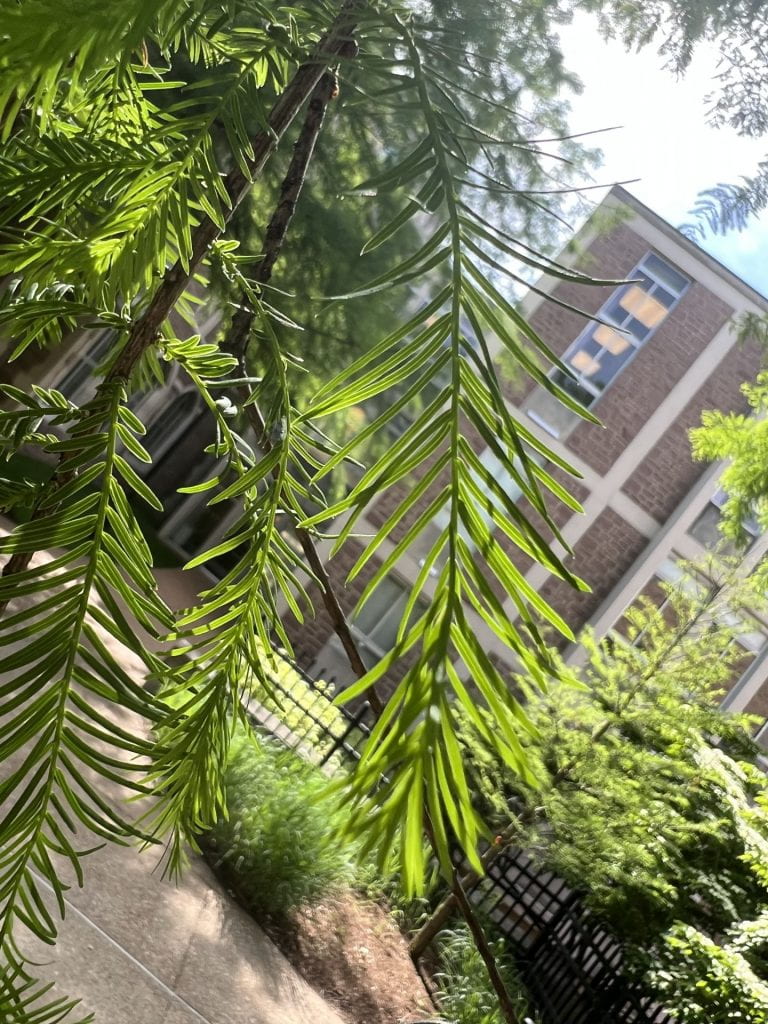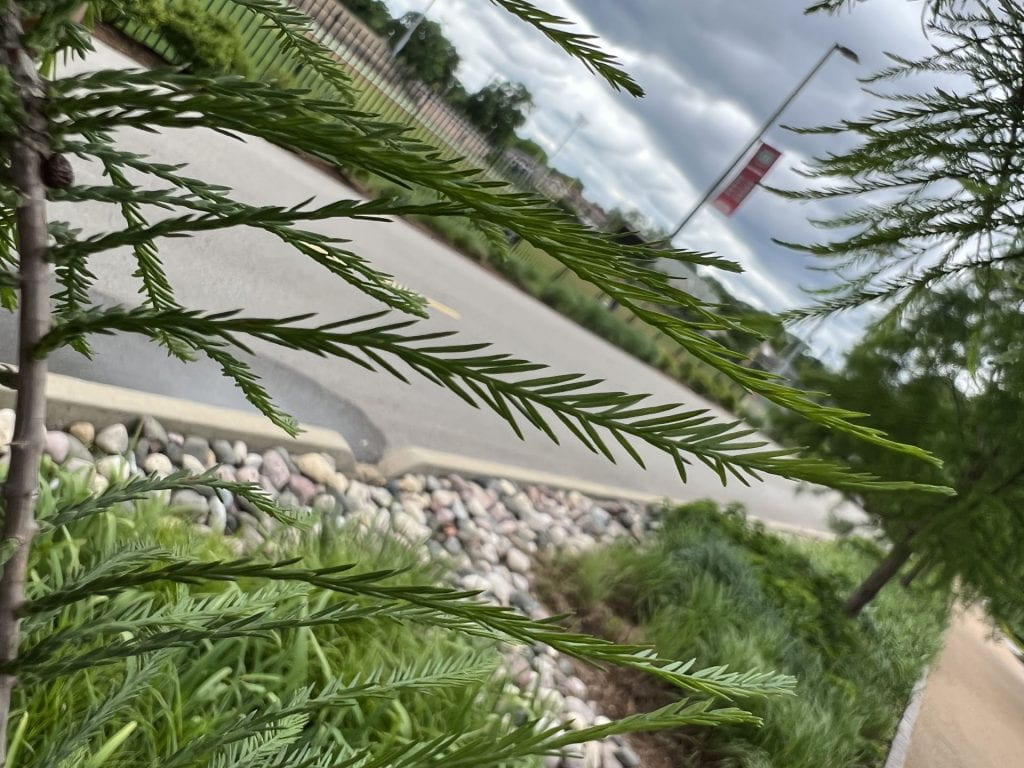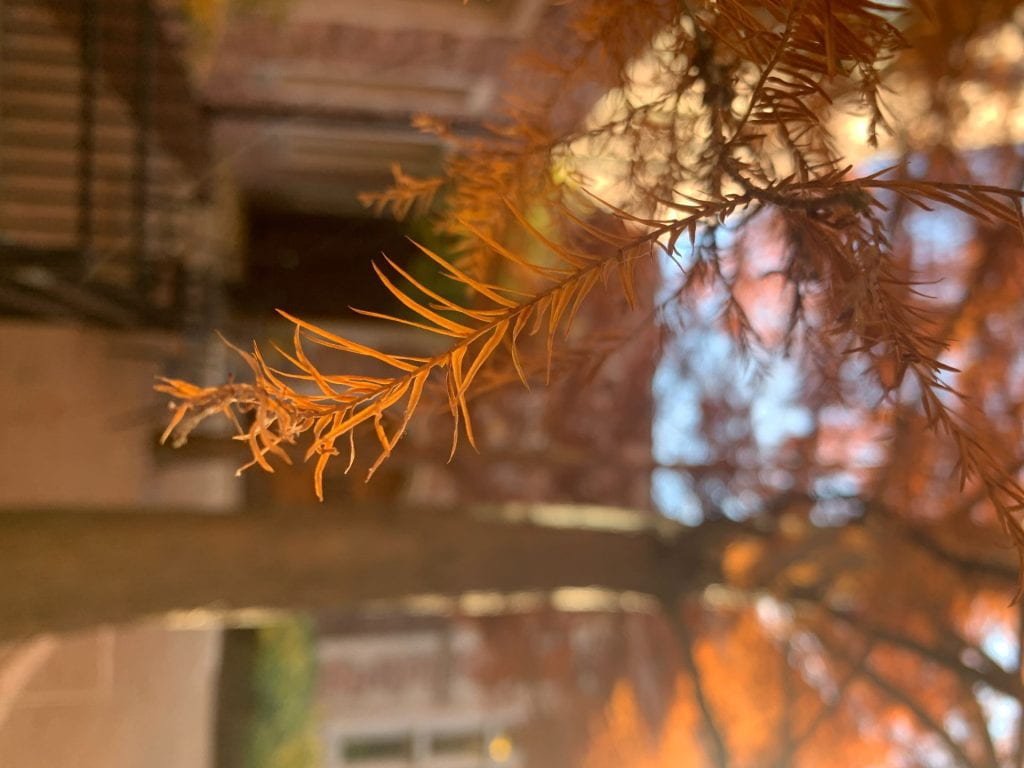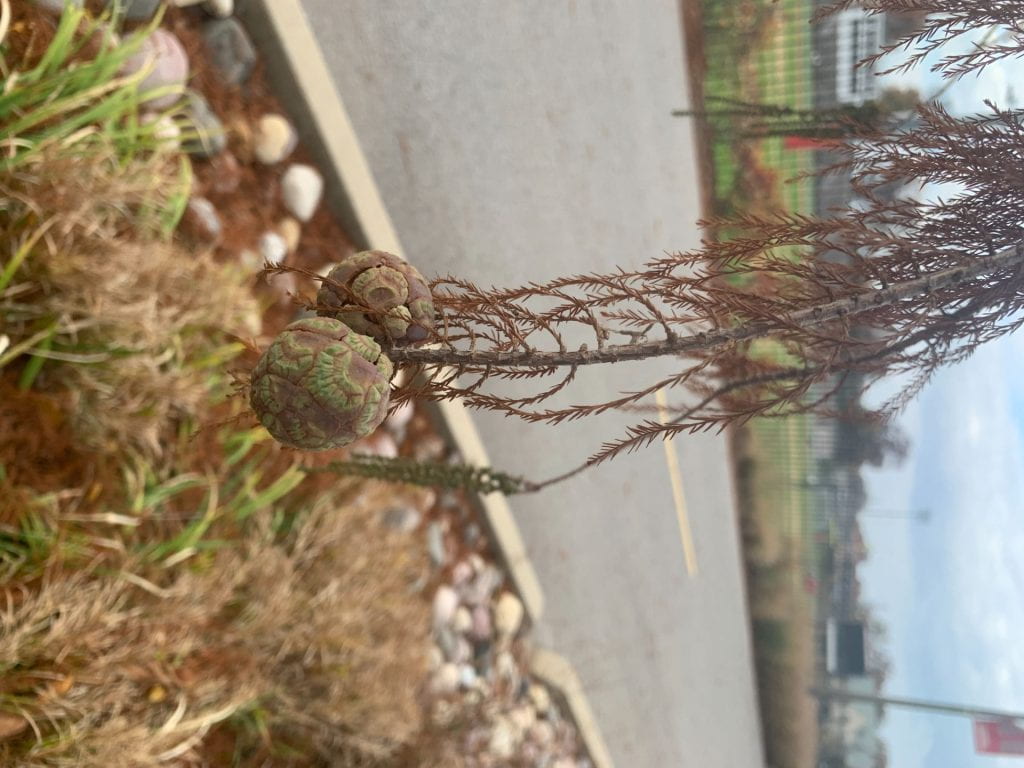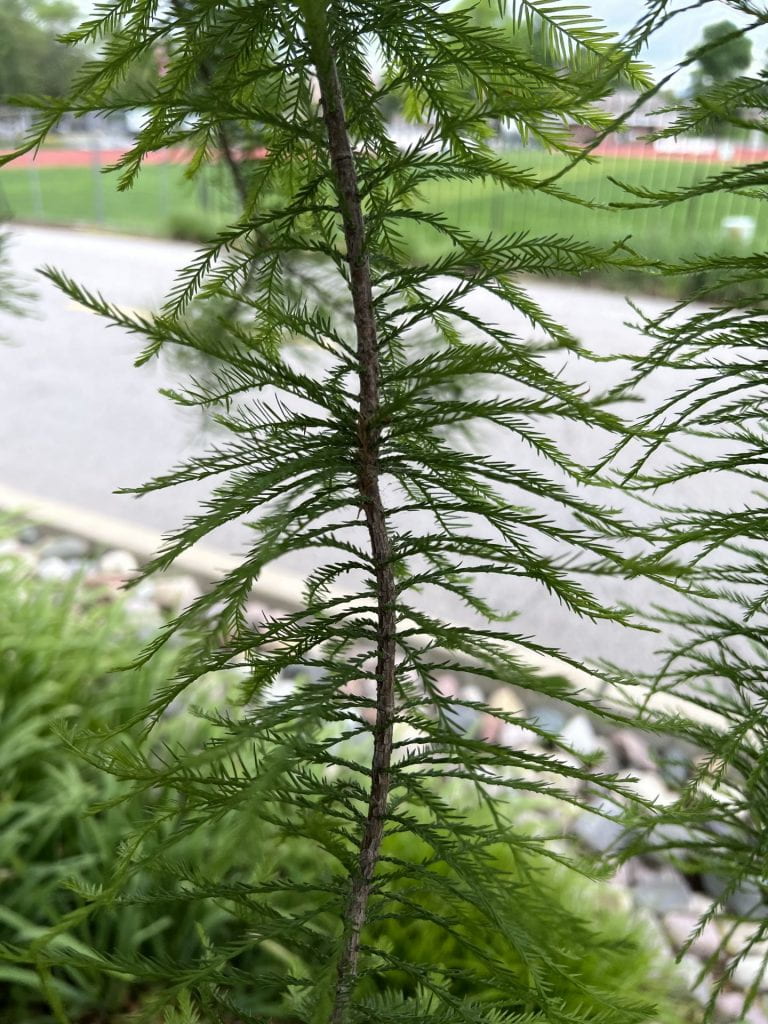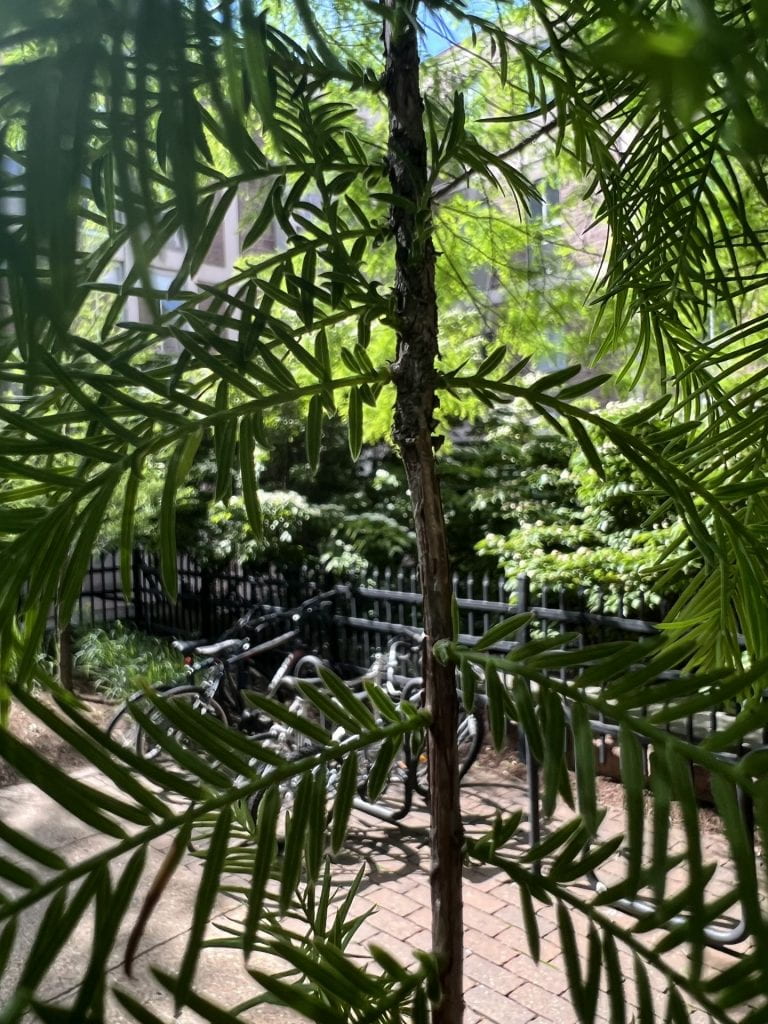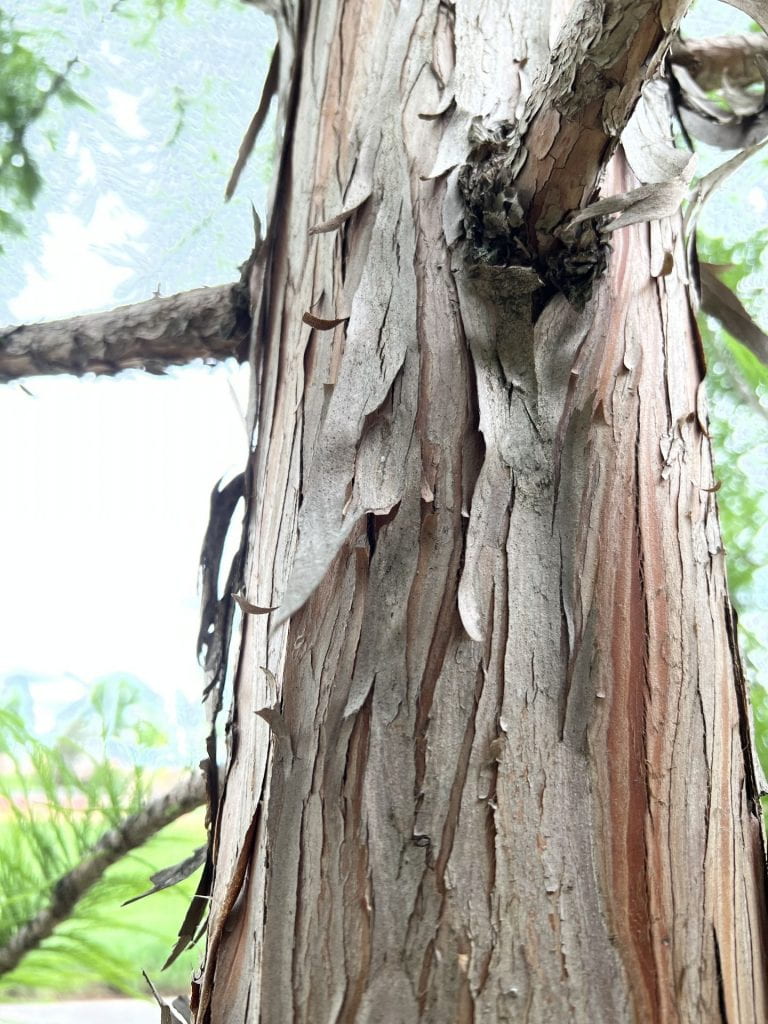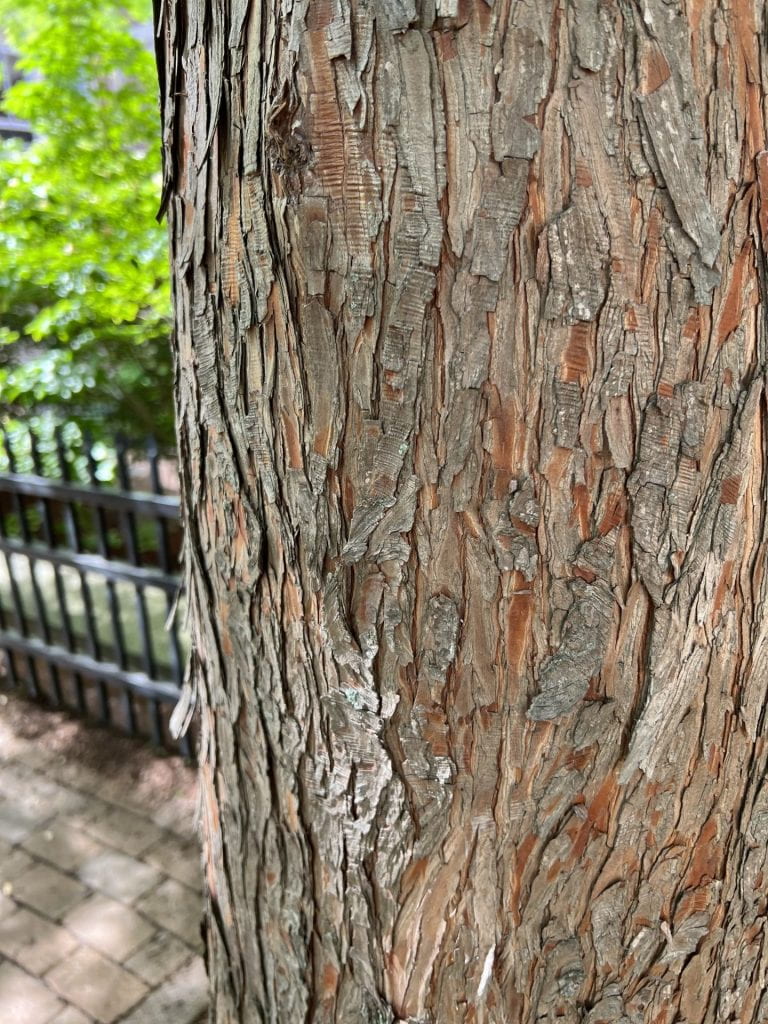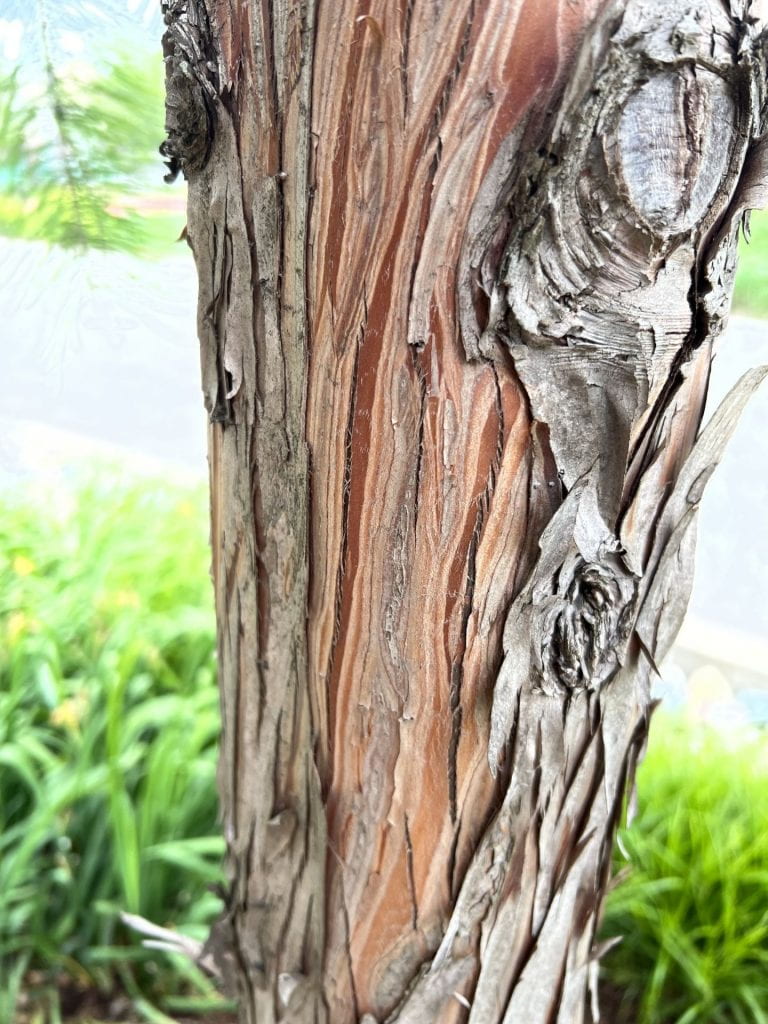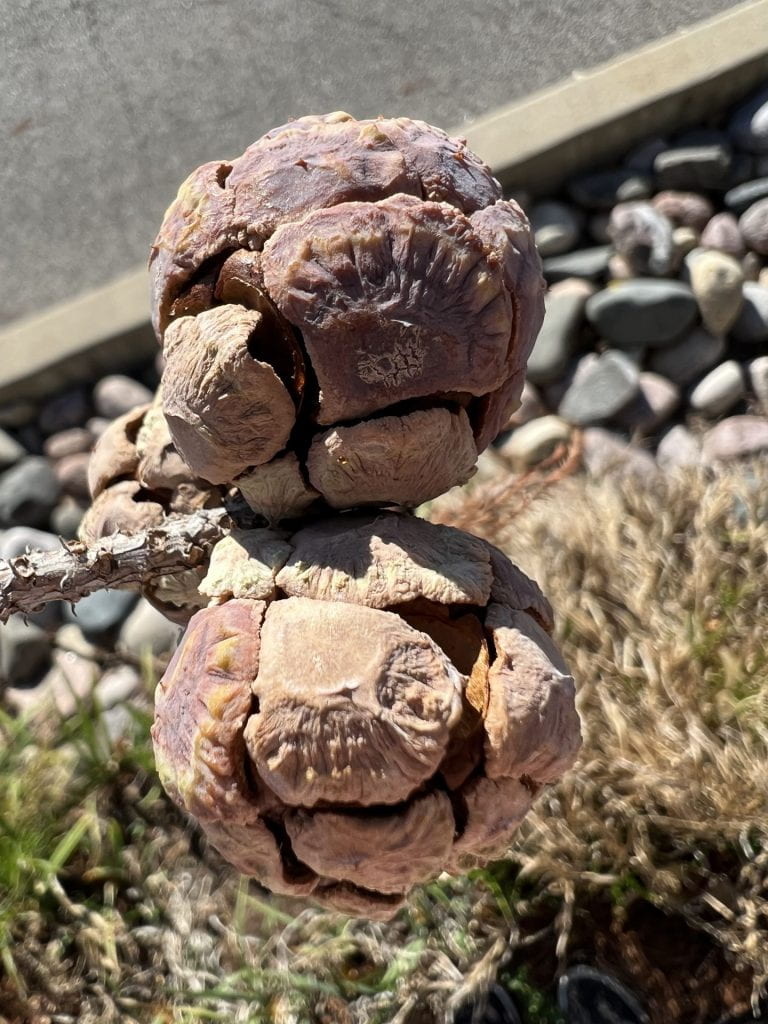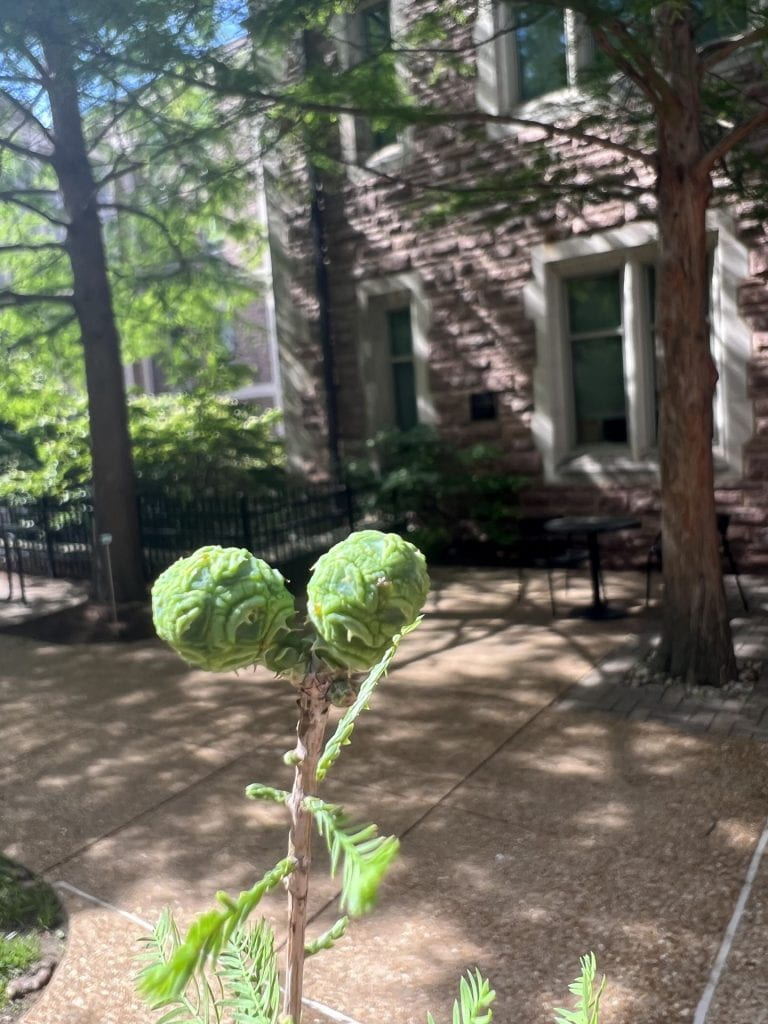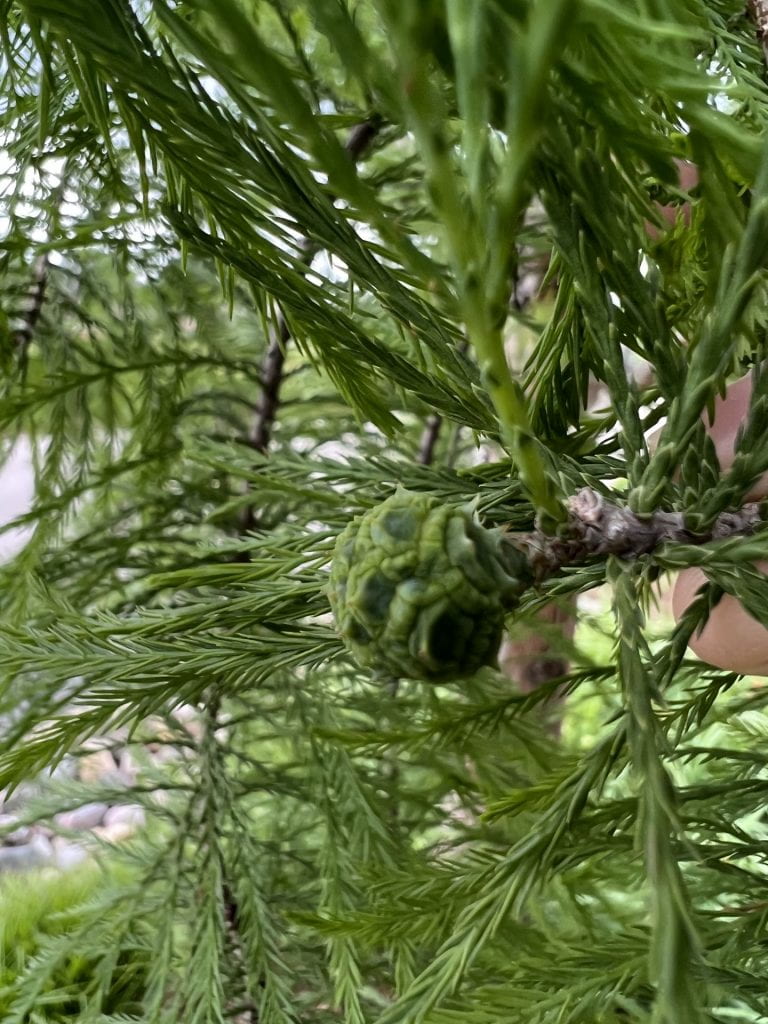Leaf Identification
The leaves of the Bald Cypress are light green and turn a russet red in the fall. The actual leaves are small, linear, and flat on a special structure known as a branchlet. This form creates the appearance of a pinnately compound leaf, but it is not an example of one.
Twig and Bud Identification
Twigs of the Bald Cypress are reddish-brown. The Bald Cypress also has a special kind of twig called a branchlet. The branchlets are green and hold the actual leaves. It looks somewhat like the rachis (main axis) of a pinnately compound leaf, and they also fall off when the leaves do. Sometimes the twigs are called persistent branchlets, and the branchlets are called deciduous branchlets. Buds are not prominent in this species.
Bark Identification
The bark of the Bald Cypress is fibrous with gray outer bark and reddish-brown inner brown. Very old trees will develop scaly bark.
Cone Identification
The cones of the Bald Cypress are globose-shaped (spherical) and composed of woody scales that start out green and eventually turn brown. The cone will disintegrate into multiple seeds. The staminate cone is a drooping, long panicle (strobilus), and the ovulate cone is subglobose-shaped and scaly.
‘Mickelson’ Identification
It has a narrower shape and a denser foliage compared to the native species.
Bald Cypress ID Tips
- The Bald-cypress is closely related to the Redwood; disregarding the fact that the Bald Cypress is Eastern and the Redwood is confined to the Pacific Coast, the Redwood is easily discernible by its record size (often above 300′), easily double the height of the already tall Bald-cypress (up to 150′).
- The Bald-cypress can be distinguished from the Dawn Redwood based on the pairing of branchlets; branchlets are arranged oppositely on the Dawn Redwood, but alternately for the Bald-cypress.
- The Bald-cypress is identifiable from the Pond-cypress by its longer needles and shallower bark furrows between scales on mature trees. The Bald-cypress is also taller, up to 150′.
